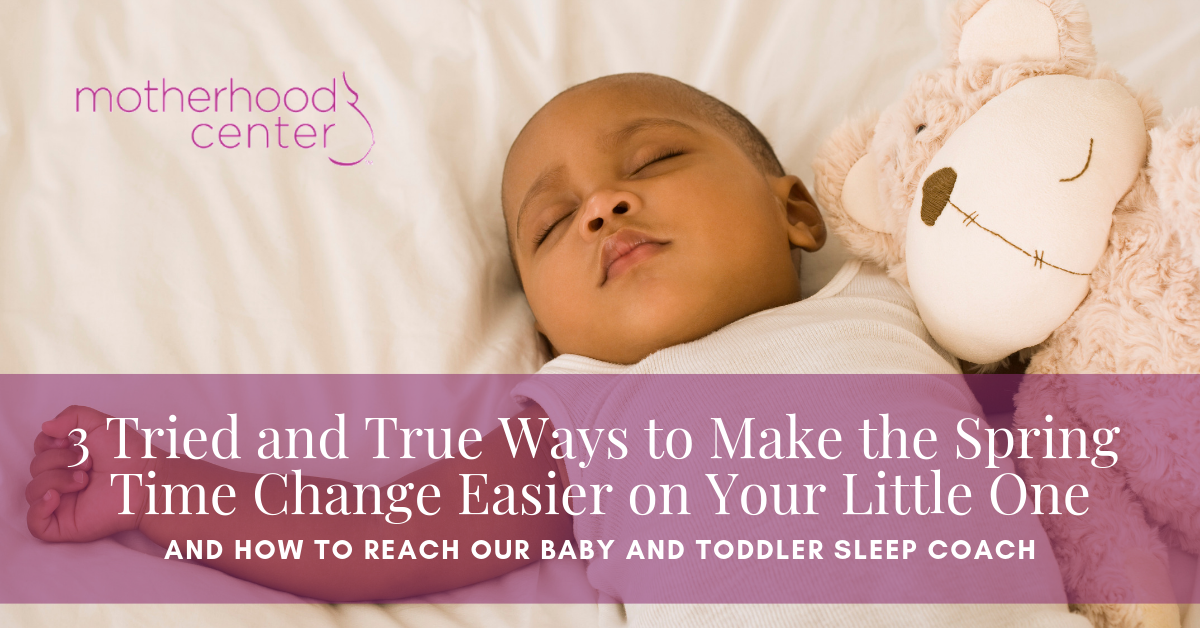The spring time change is almost here (for most states)! One little ol’ hour has the potential of derailing your little one’s delicate sleep schedule. But fear not! You have several options to help make the transition as easy as possible.
Emily DeJeau writes at The Baby Sleep Site:
What can you do to prevent springing forward from wreaking havoc on your baby or toddler’s schedule? Let’s take a look at your options:
1. Don’t do anything. This is the best option for parents whose babies or toddlers are currently waking too early. If that’s the case, then simply “go with the flow” of the time change. Do that, and the baby who was waking at 5 a.m. will now wake closer to 6; the toddler who was rising at 6 a.m. probably won’t wake until 7. Early rising problem solved! Meals, nap times, and bedtime will also (probably) adjust themselves accordingly.
Of course, this isn’t always an option. If your baby or toddler already has a late bedtime, then it might not be feasible to have bedtime happen a whole hour later. Or perhaps you need your child out of bed and ready to go at a certain time each morning. If that’s the case, then letting her sleep in an extra hour won’t be possible.
This option also won’t work for parents who happen to like their baby or toddler’s current schedule, thank you very much, and don’t want to change it.
Which brings us to option 2…
2. Stick to your child’s normal schedule. You’re not actually doing any schedule shifting here; you’re simply observing your baby or toddler’s “old” times for meals, naps, and bedtime. So, for example, if your baby was consistently waking at 7 a.m. before the time change, then wake her at 7 a.m. after the time change (even though 7 a.m. was 6 a.m. just a few days ago.) Similarly, if your toddler was going to bed at 8 p.m. before the time change, then put him to bed at 8 after the time change (even though 8 p.m. was 7 p.m. just a few days ago.) Do the same for naps and meals.
Make sense? This is definitely more of a schedule-oriented method than a child-oriented method, and you may find that it doesn’t work out perfectly at first. Your baby may not sleep at all when her bedtime rolls around since her internal clock is telling her that it’s too soon for bed. Or your toddler may be sleepy in the morning, even though you’re waking him at his normal wake-up time because his internal clock is telling him it’s too early to wake up. Same with naps and meals.
However, after a few days (or maybe a week), your baby or toddler will probably adjust. And if you really, really want (or need) to preserve your current schedule, then this is the option you’ll probably want to try first.
To read the rest, visit The Baby Sleep Site.
In need of help getting your little one settled into a good sleep schedule? Our resident baby and toddler sleep expert, and author of this post, Kathy Monroe (aka The Baby Whisperer), can help. For more details, see here.
_________



